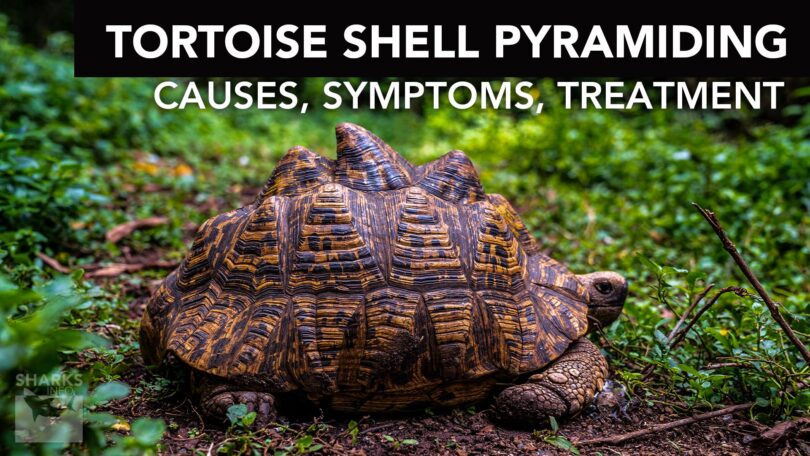The shells of the turtles provide them protection from various dangerous situations such as shelter from predatory animals. However, the shell of the turtles is also susceptible to diseases or problems, especially in their developmental phases. One of the underlying problems is shell pyramiding. This article covers the causes, symptoms, and possible treatments to prevent the disease.
What Is Shell Pyramiding?
Shell pyramiding is a type of disorder in the shells of tortoises or turtles that are probably caused by malnutrition. The disease results in the formation of a pyramid on the shell scutes and reduces the growth of the shell. However, in wild habitats, this condition is not very severe but may affect the health of the turtles, it gets worse.
What Are The Causes Of Shell Pyramiding?
Many factors may lead to shell pyramiding in the tortoise or turtles. Some of them are enlisted below:
1: Malnutrition
One of the major factors which may lead to shell pyramiding is malnutrition. In this condition, the species seems to engulf food that contains an excess of protein, and fats and lacks calcium or phosphorous in their diet.
2: Low Humidity
The other factor is the low humidity which causes shell pyramiding, especially in the pet tortoise. The areas where the humidity level is less than 60%, it would be difficult for the tortoise to live there because they cannot grow in size if they are not properly moisturized.
3: Lack Of Exercise
Most of the shell remains inactive for a longer period, this is another potential cause of shell pyramiding. The tiny enclosure may not allow the tortoise or turtles to exercise properly. Further, growing older can also weaken the muscles and bones of the tortoise, so proper exercise is needed for their healthy survival.
4: Lack Of Exposure To UV Light
Turtles and tortoises require sunlight, to observe heat and synthesize vitamin D3, which is an essential component for the development of bones and shells. However, less exposure will lead to a deficiency of vitamin D3 that can cause shell pyramiding and other metabolic bone diseases.
5: Dehydration
Turtles prefer to live in warm water conditions to ensure the adequate uptake of the water, and to keep themselves hydrated. Water is an essential requirement for the tortoise or turtles, if not available in the enclosure, then this may lead to shell pyramiding and dehydration.
What Are The Symptoms Of Shell Pyramiding?
Some of the prominent symptoms of shell pyramiding in tortoises are:
- They have raised scutes.
- The shells have a lumpy appearance.
- At the start of the pyramiding, deformities appear from the edges and base of the shell.
- The lines that separate the scutes look pitted.
- The scutes appear to be stacked plates.
- The limbs look to have twisted, swelled, and deformed.
How To Treat Shell Pyramiding?
Here are some of the simple and easy ways by which a shell pyramiding of your pet can be treated:
- Enclose the tortoise in an area where they have complete exposure to UV light.
- Provide them with enough moisturizer to keep the humidity level in balance.
- They must be provided with a diet that is less in proteins, fats, and carbohydrates but contains a high number of fibers.
- Provide them with essential minerals such as calcium and phosphorous
- Bath them at least once a week.
- Provide excess water to keep them hydrated.
- Encourage them to be active most of the time.
Is Shell Pyramiding Too Bad For The Tortoise?
The shell pyramiding is quite bad compared to the bumpy shell of the tortoise of turtles. The shell deformities can affect the functioning of the lungs, affect the reproductive cycle in the female species, and weaken the legs which leads to arthritis. Ultimately, shell pyramiding can lead to the death of these remarkable species.
Final Verdict
Shell pyramiding is one of the major disorders, especially in the pet tortoise. This may appear due to malnutrition, lack of humidity, inactivity, less exposure to UV light, and dehydration. The symptoms include raised scutes, lumpy appearance, deformities, stacked plates, and twisted limbs. Proper conditions are provided to keep the tortoise in captivity because the shell pyramiding will ultimately lead to the death of these fascinating creatures.










